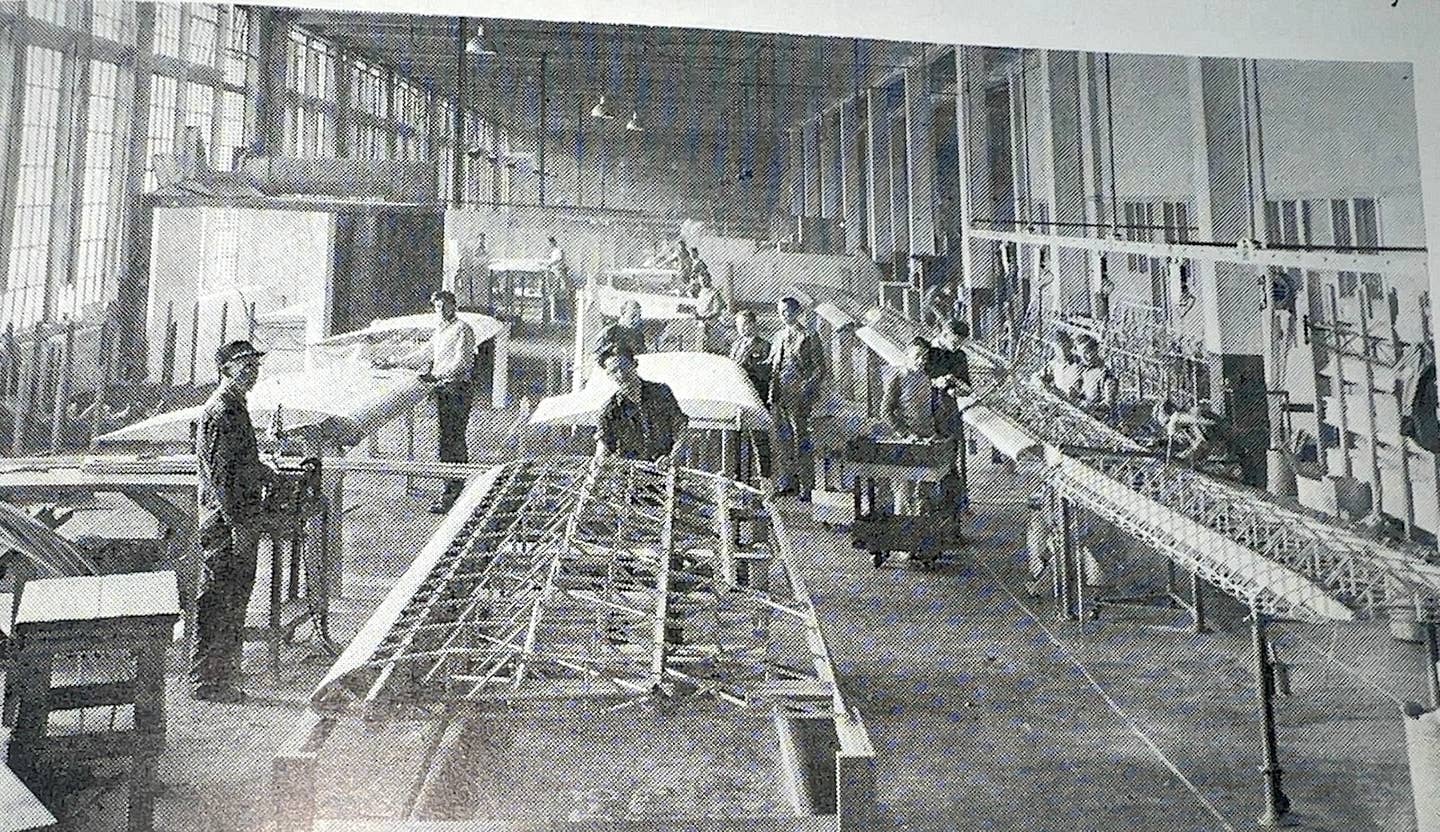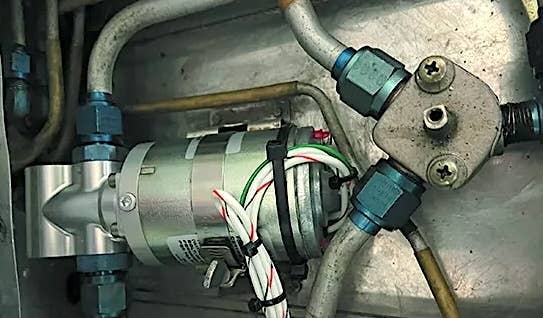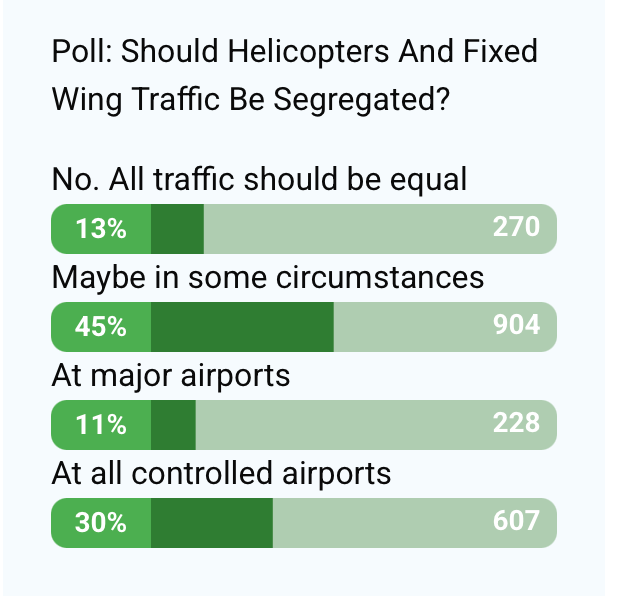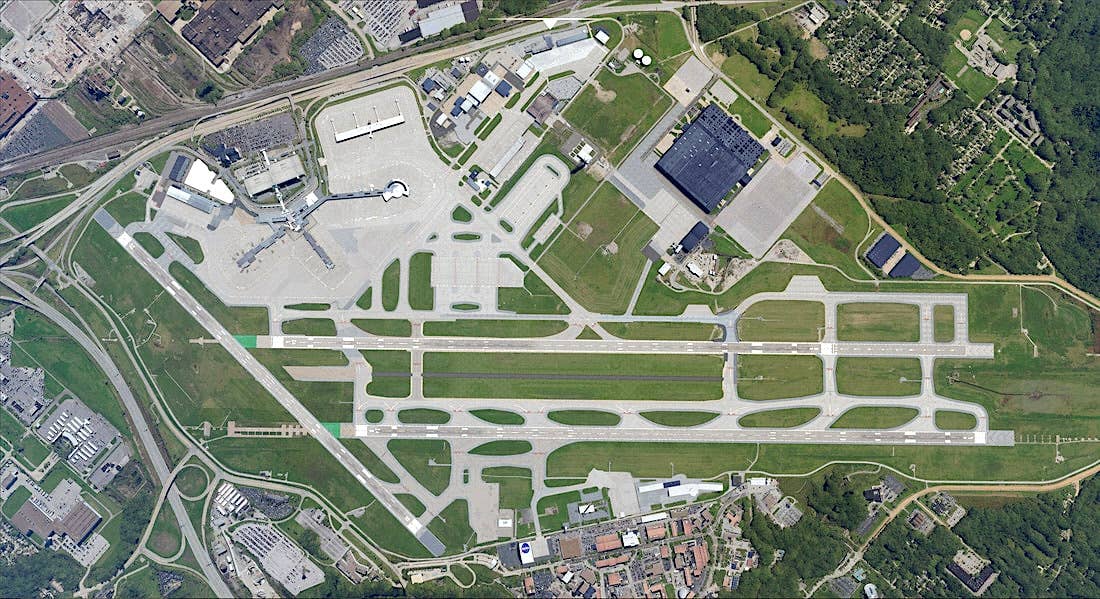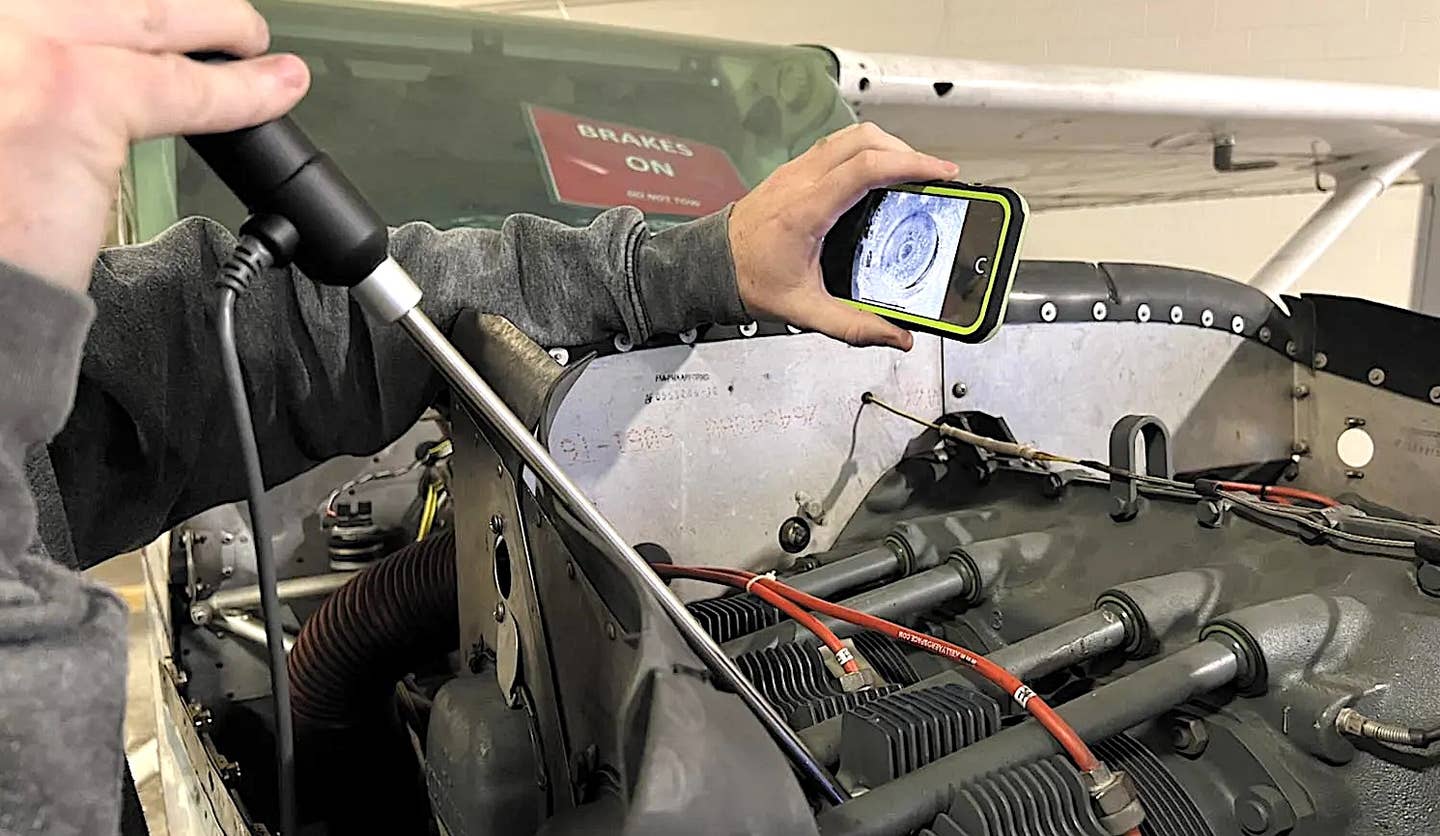Col. Joe Kittinger
AVweb had decided to Profile Col. Joe Kittinger long before current headlines had developed. But his trailblazing research on emergency escape and survival procedures for astronauts gives him a unique perspective on the Columbia disaster, and his 11 months in the Hanoi Hilton remind us what American pilots might face in the skies over Iraq. In this month’s Profile, AVweb’s Joe Godfrey talks with Col. Kittinger — the first man in space.
AVweb had decided to Profile Col. Joe Kittinger long before current headlines had developed. But his trailblazing research on emergency escape and survival procedures for astronauts gives him a unique perspective on the Columbia disaster, and his 11 months in the Hanoi Hilton remind us what American pilots might face in the skies over Iraq. In this month's Profile, AVweb's Joe Godfrey talks with Col. Kittinger -- the first man in space.
Joe Kittinger was born July 27, 1928, in Orlando, Fla. As a kid he got the flying bug watching airplanes from the fields surrounding Orlando Executive Airport. In 1949 he enlisted in the Air Force and was accepted into the Aviation Cadet program, graduated in 1950 and became a test pilot for NATO in Germany. Three years later he returned to the U.S. flying experimental jet fighters at Holloman AFB, Alamogordo, N.M. He also became an instructor in survival and bailout techniques. At Holloman he began a lifelong friendship with Dr. John Paul Stapp. Kittinger and Stapp began with rocket-sled experiments to test man's G-force endurance, then moved to Project Manhigh -- zero-gravity flights to test cosmic rays, pilot escape and survival procedures. On June 2, 1957, Kittinger piloted Manhigh I to a height of 96,000 feet, jumped and parachuted back to earth. Gagarin and Shepard's rides came later, which makes Kittinger the first man in space. During Projects Excelsior I and II he logged jumps from 76,800 feet and 75,000 feet, and on August 16, 1960, he jumped from Excelsior III at 102,800 feet. That day he set records for the longest freefall -- 4:36 -- the highest parachute jump ever, and became the first man to exceed Mach I without an aircraft or space vehicle. On December 13, 1962, Kittinger was the pilot for Project Stargazer -- man's first attempt at astronomy from space. In 1961 Col. Kittinger wrote "A Long, Lonely Leap." It's currently out of print but plans are in the works to repint it.
He had trained as a fighter pilot, so as Vietnam heated up, he volunteered for the Air Force's Aero Commandos and logged over 1,000 hours combat flight in three tours of duty. He commanded the famed "Triple Nickel" -- the 555th Fighter/Bomber squadron. Seven days before the end of his third tour he was shot down over North Vietnam, spent 11 months as a POW in the Hanoi Hilton, and kept his morale up by planning a round-the-world balloon flight. In 1976 he served as flight operations director on Ed Yost's attempted balloon crossing of the Atlantic Ocean in Silver Fox. In 1978 he retired from the Air Force, and in 1983 he flew a helium balloon from Nevada to New York in 72 hours -- a record. In 1984 he flew solo from Maine to Italy and became the first -- and only -- person to cross the Atlantic solo in a balloon. He won the Gordon Bennett balloon race four times. For almost 20 years he has operated Rosie O'Grady's Flying Circus, giving balloon and biplane rides in the Orlando area. Among his many awards are the Harmon Trophy, Two Montgolfier Diplomas, Silver Star with Oak Leaf Cluster, Legion of Merit with Oak Leaf Cluster, Distinguished Flying Cross with five Oak Leaf Clusters, Bronze Star Medal with "V" device and two Oak Leaf Clusters, and the National Aeronautic Association's Elder Statesman of Aviation award. Recently the City of Orlando set aside one of those fields near ORL so kids have a place to watch airplanes -- and named it Colonel Joe Kittinger Park.
How did you get interested in flying?
My dad took me for my first ride when I was 18 months old in a Ford Traveller. He said I was the only kid that didn't cry, and I think that was the beginning of my love for aviation. I built model airplanes, and read everything I could about pilots and flying. I loved to ride my bicycle out to the airport to watch the airplanes and talk to the pilots. I knew I wanted to fly -- there wasn't any doubt in my mind. I needed two years of college to get into the Air Force Aviation Cadet program, so I went to the University of Florida for two years then joined the Air Force in March of '49 at Goodfellow AFB in San Angelo, Texas. I flew T-6s in Texas, then flew P-51s at Nellis AFB, and graduated as a 2nd Lieutenant there.
I was a fighter pilot and Korea was a war, so I volunteered to go there, but I was sent to Germany the day before the Korean War started, and once I got to Germany they wouldn't let me transfer. I was in the 86th Fighter/Bomber Group and we flew P-47s -- we were the last active-duty P-47 unit in the Air Force. I loved that airplane. In December of 1950 we got brand-new F-84s, and transitioned to those. In 1952 I volunteered for a one-month stint as a test pilot for NATO in Copenhagen. That one-month stint became a six-month stint, and I flew over 200 F-84-G models. That project got me interested in test flying, so when it was time to be reassigned I volunteered for the Research and Development Command in Holloman AFB -- which was the end of the world in those days. I flew 11 types of airplanes at Holloman -- everything from an F-104 to an L-19.
Sounds like you volunteered a lot...
I always volunteer. Ninety percent of everything I did in life happened because I volunteered for it. When I heard about the Zero Gravity program I volunteered, and that's how I met Dr. John Paul Stapp, who was in charge of the Aeromed Lab. We liked each other from the start, and that began a 50-year friendship until he died a few years ago.
Stapp had scientists and doctors but he needed a test pilot, so when I volunteered for Project Manhigh Dr. Stapp accepted me immediately.
What did you think you were volunteering for with Project Manhigh?
I knew the there were a lot of far-reaching objectives. We had never put a man into space, and we knew that when man went into space it would be in a small, confined capsule. We knew when we went into space there would be physiological monitoring, and life support and communication systems, and the purpose of Manhigh was to test those systems and determine how to select and train the astronauts, keep them alive through the mission and bring them back safely.
What was the controversy behind your message "Come and get me?"
After I left the ground in Manhigh I the transmit radio failed. I could hear them but I had to use Morse Code to respond. The balloon got to 96,000 feet and stopped climbing, and Stapp asked me how I felt. I tapped out "G-R-E-A-T." Then he told me to start down and I tapped out "C-O-M-E-A-N-D-G-E-T-M-E." Dr. Simons thought that I had suffered "breakaway phenomenon." This all started when one of the medical papers said that some of the high-altitude pilots had experienced a kind of hallucination. Those pilots weren't test pilots, or fighter pilots. A good pilot's in command of himself and the aircraft and he does what he's supposed to do -- so there's no such thing as "breakaway phenomenon" for an aviator.
The scientists never really appreciate the philosophy of a pilot -- that feeling that a pilot gets between himself and the equipment. Pilots aren't passive, they want to be in control. That was one of the challenges of the early Mercury Program -- the pilots wanted a challenge -- a task, a reason to be there -- and the scientists were treating the pilots like trained chimps. As the pilots learned the systems, they knew they needed to be in control, or at least have the ability to take control. A lot of the Air Force test pilots were disenchanted with the Mercury Program because they wanted to remain pilots and not become passengers.
Nobody had discussed the concern of "breakaway phenomenon" before the flight and if I had known he was concerned I wouldn't have said "Come and get me." I was just having fun.
Tell us more about Dr. Stapp and some of the other people you worked with.
Stapp was our leader and our visionary. We could never have finished our programs if he hadn't gone to bat for us, getting us funds, information, people. He never made General -- he should have made two or three stars for all the work he did for mankind and the Air Force -- but he wasn't a politician, he was a scientist. He was a great, great man and never got the recognition he deserved. He did the first G tests, and did the original work on seat belts and lap restraints. How many hundreds of thousands of people around the world are alive because of his work? They would have come along 20 years later if Stapp hadn't done his work.
He was the bravest man I ever met. When he did the sled runs [reaching 46.2 Gs of deceleration] he knew that he'd be beat up and might suffer permanent damage, but he did it -- he didn't send somebody else to do it. It took a brave man to back me through my jumps. If I had been killed they'd have buried me, but they would have hauled him before committee after committee for endless ridicule.
After Manhigh I met and briefed Werner Von Braun. We were working on a project called MISS -- Man in Space Soonest. The Air Force and the Army were planning to use an Atlas missile. We went to Redstone in 1958 and made a presentation but it was turned down.
Duke Gildenberg is a very talented weather guy. He wasn't a scientist for anything but weather, but he did all the weather forecasts for my projects and he was extremely accurate and very professional. He's still a good friend.
Francis Beaupre designed the parachutes for my jumps. He was a brilliant engineer, which wasn't appreciated by his supervisors. He's still alive and I see him every couple of months but he's having some health problems now.
What did we learn from Project Manhigh?
We didn't do it to set records -- we did it to gather information for our space program. We didn't do it for skydivers -- my last jump was only my 33rd jump. We didn't do it for balloon enthusiasts -- the balloon complicated the mission and we would have used an airplane if we had had one that went that high. Everything we did was for the benefit of pilots and astronauts.
We knew space was a hostile environment to man -- and we saw it again with the Columbia disaster. The Space Shuttle is the first experimental aircraft ever built without an escape system for the difficult portion of the flight. In 1986 when the Challenger booster blew up, they peaked at 100,000 feet, and with an escape system like the one we had developed 40 years ago, they could have jumped or ejected from that spacecraft and had the same ride down that I had. But they didn't have the equipment. I believe the crew was still alive inside the capsule when it hit the water, and they might have survived if they had been able to eject. NASA didn't invent the escape system and you have to wonder if there's some "Not Invented Here" syndrome involved.
Of course, an ejection system wouldn't have saved the Columbia crew. There's not much difference in pressure from 200,000 feet to 100,000 feet, but if they survived the heat and ejection at Mach 18, they would have reached terminal velocity before they could slow down. They would have had to have another capsule with re-entry ability inside the Shuttle, and the weight of that would be prohibitive. There's no escape system that would have saved the Columbia crew.
Tell us about Project Stargazer.
Stargazer's goal was to put a telescope and an astronomer into a balloon, ascend outside the turbulence of Earth's atmosphere and look into space. It was a predecessor to the Hubble Telescope, only ours was a much cheaper way to do it than the one NASA wound up doing. We were pushing the state of the art at the time, in terms of being the heaviest payload balloon ever built, developing stabilization for the telescope, and time in space. Right after the program got going Dr. Stapp was transferred, and without his support there was nobody to counter the opposition to it, so it got cancelled.
What crosses your mind now as you watch astronauts doing spacewalks?
The equipment has improved considerably in 40 years, but there's still plenty of risk involved -- if something happens to their spacesuit, they're dead. Space is still hostile -- there's no pressure, temperatures are extreme. We'll travel in it, but we'll never conquer it. In a sense NASA has made us complacent by making these missions look so easy, and shocks like Challenger and Columbia remind us that they're anything but easy.
Tell us about your three tours in Vietnam.
After Stargazer was cancelled, Vietnam was in progress, and I was a fighter pilot, so I volunteered. I could have stayed in research and gotten involved in Apollo but I thought I owed it to the Air Force and my country to go and fight. I got into the Aero Commandos, trained at Hurlburt AFB, and went to Vietnam. The B-26s we flew were old -- they had been used in Korea -- and they had been built as bombers but we were using them as fighter/bombers. We were pulling Gs, and the wings started coming off the airplanes. In 1964 a wing came off during a night fire-power demonstration at Eglund AFB, and they grounded the fleet and sent us home. The Air Force modified 40 B-26s at Van Nuys -- better engines, better props, beefed-up wings -- and celled them Aardvarks. That was a great airplane. In June of 1966 I led a flight of eight Aardvarks to Thailand and I was back. Most of our flying was at night along the Ho Chi Minh trail in Laos and North Vietnam.
|
Project Stargazer
|
After that tour I spent a year with Special Forces in Germany and two years in joint assignments, then I went back to Vietnam. In Mayof 1971 I was made Commander of the 555th -- the "triple nickel" -- a squadron with a lot of tradition. We had great morale and a great group of guys. We were flying F-4s which was a very versatile fighter/bomber. It would take a lot of battle damage and still get you home. It drank a lot of gas and almost every mission involved in-flight refuelling. Our only problem was the F-4 was a tough airplane to maintain and we weren't always able to fly as much as we wanted to.
On March 1, 1972, I shot down a MiG21, and, of course, I wanted four more so I could be an Ace. Fighter pilots have fangs when they're in combat, and Robin Olds told me I let my fangs hang out too far. I was chasing a MiG, but I wasn't close enough to positively identify him as a MiG, and I chased this guy all over Hanoi. I wasn't going to shoot until I confirmed he was a MiG -- I was just a few seconds away from shooting him -- and as I was maneuvering to identify, I got shot down by a second MiG.
When I got hit I was doing Mach 2, and the airplane went out of control. My backseater was unconscious from the G forces. I was conscious, but I couldn't reach the eject handle because of the G forces. Finally the airplane oscillated and I reached the handle, blew both canopies and ejected us both. We were supersonic at 18,000 feet when we ejected, so I had to freefall to 10,000 feet. My backseater stayed unconscious for the ride down, and he survived. When I landed I was pounced on by about 50 people, and within the first minute I was almost killed twice -- once by an old lady and once by a kid with a machete.
Not by soldiers, but by civilians?
Right. I'm sure that many of the airmen that were killed were killed by civilians right where they landed.
I survived that encounter and was picked up by soldiers and taken to Hanoi. Navy and Air Force pilots were well-trained, we knew what we were facing in prison, we knew what information they wanted and how to resist giving it to them. Just to be a U.S. pilot required above-average intelligence and determination, so we started with a select group of people. We wanted books so we could study and occupy our minds, and the Vietnamese knew that's what we wanted and refused to give it to us. We had classes every day -- French, algebra, geography -- just to keep our minds active because we had nothing to read.
The guys who were there early on were brutally tortured, in direct violation of the Geneva Convention. By the time I got there the treatment was less severe. I was tortured because they found out I commanded the 555th, but they also realized that we had some propaganda value. I believe that every prisoner came out a better man, because we realized what a wonderful country we live in, and we learned what freedom is all about. The happiest day of my life was when I got released and got back to freedom.
Some prisoners spent their time doing mathematical calculations, or designing a house. I spent my time planning long-distance balloon flights, including a trip around the world, and as soon as I got out I started working on getting sponsors. I decided I would start with a trip across the Atlantic as a training flight, and I did that in 1984.
Which balloon did you use for your trans-Atlantic record?
Ed Yost built that balloon. He had tried to fly the Atlantic solo in 1976, and I was his operations officer in England for that flight. Ed had also designed the Double Eagle that Maxie Anderson and Ben Abruzzo flew in 1977.
Planning your round-the-world trip got you through the Hanoi Hilton. How close were you to making the trip you planned?
I was intent on making that trip, but I couldn't line up the sponsors. I was a consultant for Richard Branson's trip, and my wife and I went to Morocco. Steve Fossett did a fabulous job and he's a great aviator. He also spent a lot of money -- it took him six attempts to do it. Flying solo around the world was the last great aeronautical challenge left -- at least for balloons. Someday somebody will fly around the world in an airplane solo.
What was Orlando like in the '30s?
When I rode my bike out to the airport, there were dirt roads through orange groves. By the time I retired from the Air Force in '78 the city had grown up around the airport, and there was no room left for kids to watch airplanes. A group of us found a piece of land nearby and persuaded the city to make it a park, and they decided to call it Kittinger Park. So now kids have a place to watch airplanes.
What kind of flying have you done since the Air Force?
In '78 I went to work for Rosie O'Grady's Flying Circus doing skywriting, banner towing, and flying hot air and gas balloons all over the world. I used a 600HP Mooney Ag-Cat for skywriting, and I still fly one. The best engine ever built is the Pratt and Whitney 985, and the second-best engine ever built is the 1340, and that's what's in the AgCat.
About 10 years ago I started barnstorming in a 1929 New Standard owned by Steve and Suzanne Oliver. I flew that airplane all over the country. Once I took it from Vero Beach, Florida to Tillamok, Oregon -- sea to shining sea -- with 26 fuel stops. The Olivers just sold the airplane to the EAA, so now it will be giving rides at Pioneer Field, and the Olivers are building another New Standard which should be flying sometime this year. In eight years I flew over 10,000 people in that airplane, and the smiles that people have today are the same smiles that people had in 1929, when that airplane was new and I went for my first ride.


